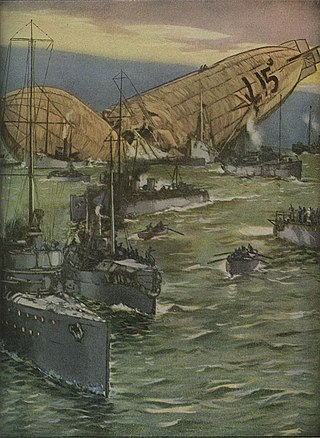Kentish Knock
Sandbank in England From Wikipedia, the free encyclopedia
The Kentish Knock is a long shoal (bank, shallows) in the North Sea east of Essex, England. It is the most easterly of those of the Thames Estuary and its core, which is shallower than 18 feet (5.5 m), extends 6 miles (9.7 km). Thus it is a major hazard to deep-draught navigation. It is exactly 28 miles (45 km) due east of Foulness Point, Essex and is centred about 15 miles (24 km) NNE of North Foreland, Kent – both are extreme points of those counties.
Shape
It is about equidistant between, on the one hand, the south-west North Sea tidal amphidromic point (place of negligible tides); and splayed on the other the narrowest point and endpoint of the English Channel (the Strait of Dover) (southeast) and heart of the Tideway (southwest) which have by contrast high tidal range. It is thus among a succession of banks which are aligned NNE to SSW but turn towards the estuary narrowing further west. In line with the erosion and deposition from each such regular tide, its north – its steepest, narrowest part – veers slightly more towards north-south alignment than its south.
Ecology
Made of sand and gravel, it hosts hermit crabs, sand goby, rays and catsharks. In rare species it has visiting red-throated divers.[1] Channels are believed to have been caused by glacial floodwaters many millennia ago. Since 2012, The Wildlife Trusts have been campaigning for recognition of a 37 sq. mi. (96 km2) section of the Knock, known as Kentish Knock East, as a Marine Conservation Zone.[2]
Scope and soundings
To explain the numbers on the inset map a depth of 11 is a formula of six feet (i.e. one fathom) and 1 foot. It is 1+1⁄6 fathoms. Some of Kentish Knock is, or was, at chart datum "01". At just one foot in depth it will have become exposed at the ebb phase of most extreme, spring tides.
Maritime history



| Year | Type | Description |
|---|---|---|
| 1652 | Battle | Battle of the Kentish Knock between Dutch Republic and Commonwealth of England |
| 1820 | Navigation aid | First reliable mapping of Kentish Knock by triangulation from Essex, by George Thomas[5] |
| 1821 | Wreck by accident | British merchant ship, the East Indiaman Juliana[6] |
| 1824 | Navigation aid | Buoy placed on the east side of the Knock[7] |
| 1836 | Wreck by accident | British ship the Nancy ran aground, broke up, and was washed up at Margate.[8] |
| 1840 | Navigation aid | Buoy replaced by lightship LV Kentish Knock[9] |
| 1860 | Wreck by accident | Dutch galliott Hillechina[10] |
| 1875 | Wreck by accident | German merchant ship the SS Deutschland[11] |
| 1885 | Wreck by accident | British Liverpool barque Canoese.[12] |
| 1886 | Wreck by accident | Lightvessel rammed by a barque PALADIN, almost cut in two and sank in three minutes. The crew were taken aboard the barque and put ashore.[13] |
| 1892 | Wreck by accident | British merchant ship, SS Dilsberg, of Glasgow[14] |
| 1894 | Navigation aid | Telephone cable laid from mainland to the lightship[15][16] |
| 1916 | Wreck by enemy measure | German Empire Zeppelin L15[17][18] |
| 1917 | Wreck by enemy measure suspected | German Empire U-boat SM UC-6, likely by mine nets or by British seaplane 8676[19] |
| 1940 | Wreck by enemy measure | British G-class Destroyer HMS Grenville after triggering a mine. |
| 1949 to 1953 | Navigation aid | Trinity House lightvessel №8 stationed here[20] |
| 1953 to 1955 | Navigation aid | Trinity House lightvessel №14 stationed here[21][22] |
| 1959 and 1963 | Navigation aid | A different lightvessel moored here[23][24] |
| 1963 to 1966 | Navigation aid | Trinity House lightvessel №20 moored here[25] |
| 1974 to 1975 | Navigation aid | Trinity House lightvessel №23 moored here[26] |
| 1984 to 1991 | Navigation aid | Trinity House lightvessel №3 moored here[27] |
| 2011 | Navigation aid | By this date a lighted buoy remained[28] |
| 2014 | Navigation aid | Phase 2 of the London Array wind farm cancelled to protect rare red-throated divers[1] |
See also
- Carnarvon Basin, Australia, where Kentish Knock South-1 is an exploratory oil well in the Mungaroo Sands.[29]
- Dogger Bank, a many-times bigger bank that extends further east, about 150 miles north
References
Wikiwand - on
Seamless Wikipedia browsing. On steroids.
